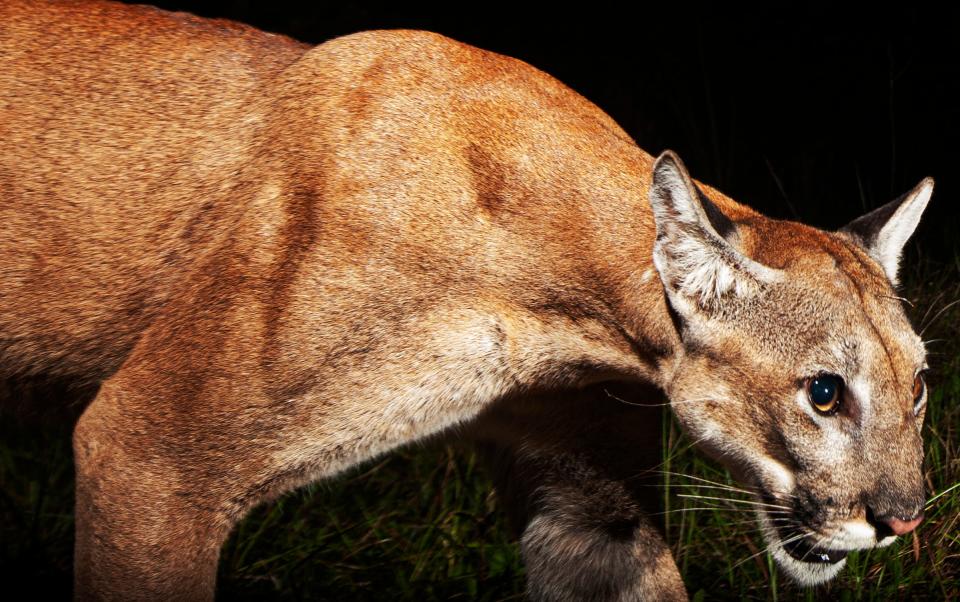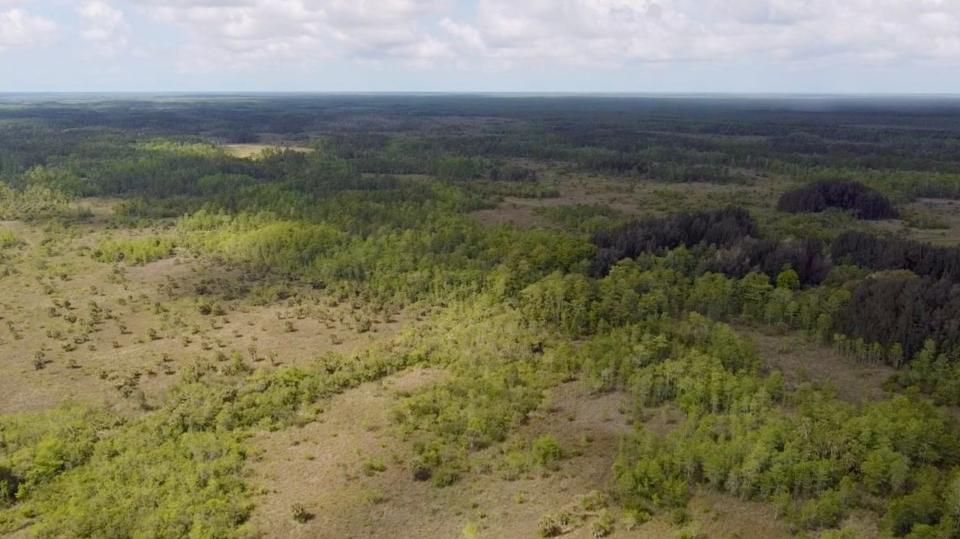Poster child for Endangered Species Act, Florida's majestic panther still faces threats
The Florida panther is one of the state's great charismatic mega-fauna, and the cat has seen some successes under the Endangered Species Act.
One of the original batch of animals placed on the vaunted federal protection list, panthers have come back from only a few dozen inbred individuals to as many as 230 big cats living south of Lake Okeechobee in the historic Everglades.
But the panthers are facing new threats, including a rare disease.
Still, the estimated number of cats alive today would get closer than ever to meeting some of the goals listed in the panther recovery plan. One of the top priorities is to grow three separate populations of 240 cats, with a total of 720 or more cats in those three areas.
Reaching that goal would include reintroducing panthers to two other regions of the Southeastern United States. That's where it gets tricky.

Georgia and Missouri are possibilities for a second and third location, but the Florida Fish and Wildlife Conservation Commission and the U.S. Fish and Wildlife Service face obstacles when it comes to placing large, physically capable predators on landscapes where they currently don't exist.
For example, helping panthers cross the Caloosahatchee River and spread to areas north of Lake Okeechobee is a goal of the recovery plan, but some farmers and landowners in Central and North Florida don't want the big cats roaming their lands.
Many folks there have expressed fears over panthers, saying they worry the cats will kill and eat their livestock, dogs, cats, chickens and donkeys.
It's become such a contentious issue that the agencies have added a "social carrying capacity" factor to the recovery of the panther.
Not based in science, a social carrying capacity refers to the public's willingness to accept the big cats.
Top threats to panthers includes cars
Roadkills are the top cause of death for Florida panthers, according to FWC records.
"The panther is threatened with extinction, and human development in panther habitat negatively impacts recovery," an FWS panther recovery plan says. "Panthers are wide ranging, secretive, and occur at low densities. They require large contiguous areas to meet their social, reproductive, and energetic needs."
Many panthers die each year in the wild and are unaccounted for, so it's very difficult for biologists to keep track of the larger population.

Roadkills, however, have been a steady measuring tool of the population, with the thinking that more roadkills mean there are more panthers on the landscape to be hit and killed by cars.
But just as the cats were gaining a steady hold on parts of south Florida, a neurological disorder sprang up in panthers and bobcats several years ago.
Poor genetic exchange almost ended big cats
Driven off more than 95% of its historic range by hunting and development, the Florida panther population shrank to just a couple dozen cats in the 1990s.
Males were born with testicular issues, and other signs of inbreeding started to dominate the few cats that were here 30 years ago.
The FWC and FWS, the state and federal agencies in charge of executing the Endangered Species Act, introduced several female Texas cougars into the south Florida population in 1997 with the hopes of expanding the genetics of the ailing cats.
Some critics argued at the time that the Florida panther would essentially become non-existent with the introduction of Texas cougar genes, but scientists pointed out that, historically, genes from Texas and Florida panthers intermingled in the past.
So, Florida panthers already had Texas cougar genetics in their make-up: they just needed more of those genetics to flourish.
Florida panther biologist: 8 big cat deaths through Oct. 20 is low
More: Reporter has greatest wildlife viewing day of past quarter-century in SWFL
A novel neurological disease
Several years ago biologists began noticing neurological issues in parts of the population.
Cats, both adults and kittens, were stumbling around the Everglades, their hind legs often dragging on the ground.
Many of those cats are thought to have died as a result of starvation of depredation, and it seems the overall number of panthers in Florida may be on the decline.
There have only been eight panther deaths documented through Oct. 25, and scientists have long said that the number of roadkills is an indicator of the health of the overall population.
By comparison, 26 panther deaths were documented through Oct. 30 of 2021, according to FWC records, with 24 big cat deaths tallied at this point in 2022.
Connect with this reporter: Chad Gillis on Facebook.
This article originally appeared on Fort Myers News-Press: Endangered panthers' recovery still in doubt after decades of protection

